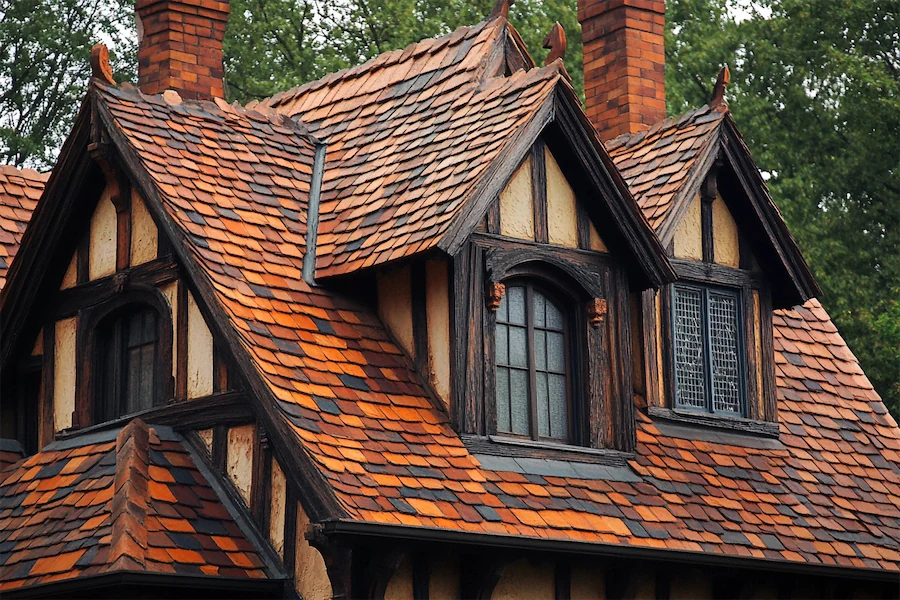Tudor roofs are a hallmark of Tudor architecture, reflecting both the aesthetic sensibilities and practical needs of 16th-century England. Characterized by their steep pitches, gabled designs, and use of traditional materials, these roofs have left a lasting legacy in architectural history.
History and Origins of Tudor Roofs
The Tudor architectural style emerged during the reign of the Tudor monarchs (1485–1603) in England. This period marked a transition from medieval Gothic to Renaissance influences, resulting in unique architectural features. Roofs from this era were designed not only for their visual appeal but also to withstand England’s damp climate. The steep pitches facilitated efficient water runoff, reducing the risk of leaks and structural damage. Initially, thatched roofs made from straw or reeds were common, especially in rural areas. However, as construction techniques evolved, clay and stone tiles became prevalent, offering greater durability and fire resistance.
Key Features of Tudor Roofs
- Steeply Pitched Gable Roofs: Tudor roofs often feature steep pitches, sometimes exceeding a 60-degree angle. This design not only enhances the structure’s imposing appearance but also ensures efficient drainage of rain and snow.
- Cross Gables: Many Tudor homes incorporate multiple gables, creating complex and asymmetrical rooflines. These cross gables add depth and visual interest to the façade.
- Decorative Half-Timbering: Exposed wooden beams set against light-colored stucco or masonry are a signature element. While primarily an exterior wall feature, this half-timbering often extends into the gable ends, integrating with the roof design.
- Prominent Chimneys: Tall, ornate chimneys are characteristic of Tudor architecture. Often placed symmetrically and adorned with intricate brickwork, they serve both functional and decorative purposes.
Applications of Tudor Roofs
Tudor roofs have been adapted in various architectural contexts:
- Residential Homes: From modest cottages to grand manor houses, the Tudor roof design has been a staple in English residential architecture, symbolizing tradition and craftsmanship.
- Tudor Revival Architecture: In the late 19th and early 20th centuries, there was a resurgence of interest in Tudor design, particularly in the United States. Homes built during this Tudor Revival period often featured the iconic steeply pitched roofs and decorative half-timbering, blending historical aesthetics with modern construction methods.
Considerations When Choosing Tudor Roofs
When considering the implementation or restoration of a Tudor-style roof, several factors should be taken into account:
- Material Selection: Authentic materials like clay tiles or slate contribute to the traditional appearance and longevity of the roof. However, these materials can be heavy and may require reinforced structural support. Modern alternatives that mimic the traditional look while offering improved performance and reduced weight are also available.
- Structural Integrity: The steep pitch and complex gable designs necessitate precise engineering to ensure stability and durability. Engaging experienced professionals familiar with Tudor architecture is crucial to address these challenges effectively.
- Maintenance: Regular inspection and upkeep are essential to preserve the roof’s functionality and aesthetic appeal. This includes checking for damaged tiles, ensuring proper drainage, and maintaining the integrity of decorative elements.
Conclusion
Tudor roofs are more than mere architectural elements; they encapsulate a rich historical tradition that marries form and function. Their distinctive features continue to inspire architects and homeowners, serving as enduring symbols of a bygone era’s elegance and practicality.
